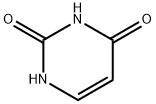Copper Pyrithione
- CAS NO.:14915-37-8
- Empirical Formula: C10H8CuN2O2S2
- Molecular Weight: 315.86
- MDL number: MFCD02660770
- EINECS: 238-984-0
- SAFETY DATA SHEET (SDS)
- Update Date: 2024-12-18 13:37:16

What is Copper Pyrithione?
Chemical properties
Copper pyrithione is a green crystalline fine powder with high stability, stored under light-proof conditions, the content remains unchanged for two years, mainly used in the production of daily chemical products, adhesives, paints, coatings, paper, pharmaceuticals, leather and other industries.
The Uses of Copper Pyrithione
Copper pyrithione is intended to be used as a co-biocide (booster biocide) by both professional and non-professional users in antifouling products (PT 21) against marine fouling species. It is meant to be effective against soft-fouling organisms, so its function is to increase the efficacy of the product in order to remove the most problematic fouling organisms.
What are the applications of Application
Copper pyrithione, [Cu(PyS)2] is used as an additive to protect paints (such as industrial and marine) against microbe (algal, fungal and bacterial) and crustacean growth. It acts as a low metal fouling agent with long-lasting efficacy that does not induce galvanic corrosion making it suitable for metal hulls and marine environments.
Definition
Copper pyrithione belong to a class of cyclic sulfur organo products containing sulfur atom (S) and often oxygen (O), nitrogen (N), hydrogen (H), as well as other elements, can find application for making biologically active agents such as antiviral, antibacterial, antifungal agents. It is an effective inhibitor of microbe growth including algal, fungal (molds & yeasts) and bacterial (gram-positive & gram-negative).
Antimicrobial activity
Copper Pyrithione Cu Powder possesses a broad spectrum of antifungal and Antialgal activity against all fungi and algae including following relevant organisms. This product can restrain and sterilize eight moulds, five bacteria, as well as two yeast fungis which are distillery yeast and bakers'yeast. It's MIC to various micro-organisms as follows:
Microorganisms MIC(PPM)
Aspergillus niger 20 Cladosporium herbarium 6 Escherichia coli 8 Aspergillus flavus 20 Trichoderma viride 8 Pseudomonas fluorescens 18 Aspergillus versicolor 18 Chaetomium globosum 6 Staphylococcus aureus 6 Penicillium citrinim 8 Bacillus subtilis 8 Saccharomyces cerevisiae 6 Pacillomyces varioti 8 acillus megaterium 6 Klocckeria Janke 8
Hazard
Moderately toxic by ingestion, inhalation, and skin contact.
Properties of Copper Pyrithione
| Melting point: | >256°C (dec.) |
| Density | 1.8106 at 22.5°C |
| storage temp. | -20°C Freezer |
| solubility | Sparingly soluble in water 4.93 mg l-1 at 20.0°C; 6.11 mg l-1 at 30.0°C, Slightly improved solubility in organic solvents |
| form | Powder |
| color | Olive green coloured |
| Odor | Nearly odourless to Mild |
| Stability: | Light Stable, stable in the pH range 6-8. |
| CAS DataBase Reference | 14915-37-8 |
| EPA Substance Registry System | Copper pyrithione (14915-37-8) |
Safety information for Copper Pyrithione
Computed Descriptors for Copper Pyrithione
Copper Pyrithione manufacturer
New Products
Tert-butyl bis(2-chloroethyl)carbamate 4-Methylphenylacetic acid N-Boc-D-alaninol N-BOC-D/L-ALANINOL N-octanoyl benzotriazole 3-Morpholino-1-(4-nitrophenyl)-5,6-dihydropyridin- 2(1H)-one Furan-2,5-Dicarboxylic Acid DIETHYL AMINOMALONATE HYDROCHLORIDE 1,1’-CARBONYLDIIMIDAZOLE R-2-BENZYLOXY PROPIONIC ACID 1,1’-CARBONYLDI (1,2-4 TRIAZOLE) N-METHYL INDAZOLE-3-CARBOXYLIC ACID (2-Hydroxyphenyl)acetonitrile 4-Bromopyrazole 5-BROMO-2CYANO PYRIDINE 5,6-Dimethoxyindanone 5-broMo-2-chloro-N-cyclopentylpyriMidin-4-aMine 2-(Cyanocyclohexyl)acetic acid 4-methoxy-3,5-dinitropyridine 1-(4-(aminomethyl)benzyl)urea hydrochloride 2-aminopropyl benzoate hydrochloride diethyl 2-(2-((tertbutoxycarbonyl)amino) ethyl)malonate tert-butyl 4- (ureidomethyl)benzylcarbamate Ethyl-2-chloro((4-methoxyphenyl)hydrazono)acetateRelated products of tetrahydrofuran








You may like
-
 14915-37-8 Copper pyrithione 98%View Details
14915-37-8 Copper pyrithione 98%View Details
14915-37-8 -
 14915-37-8 99%View Details
14915-37-8 99%View Details
14915-37-8 -
 1975-50-4 98%View Details
1975-50-4 98%View Details
1975-50-4 -
 2-HYDROXY BENZYL ALCOHOL 98%View Details
2-HYDROXY BENZYL ALCOHOL 98%View Details
90-01-7 -
 2-Chloro-1,3-Bis(Dimethylamino)Trimethinium Hexafluorophosphate 221615-75-4 98%View Details
2-Chloro-1,3-Bis(Dimethylamino)Trimethinium Hexafluorophosphate 221615-75-4 98%View Details
221615-75-4 -
 14714-50-2 (2-Hydroxyphenyl)acetonitrile 98+View Details
14714-50-2 (2-Hydroxyphenyl)acetonitrile 98+View Details
14714-50-2 -
 118753-70-1 98+View Details
118753-70-1 98+View Details
118753-70-1 -
 733039-20-8 5-broMo-2-chloro-N-cyclopentylpyriMidin-4-aMine 98+View Details
733039-20-8 5-broMo-2-chloro-N-cyclopentylpyriMidin-4-aMine 98+View Details
733039-20-8